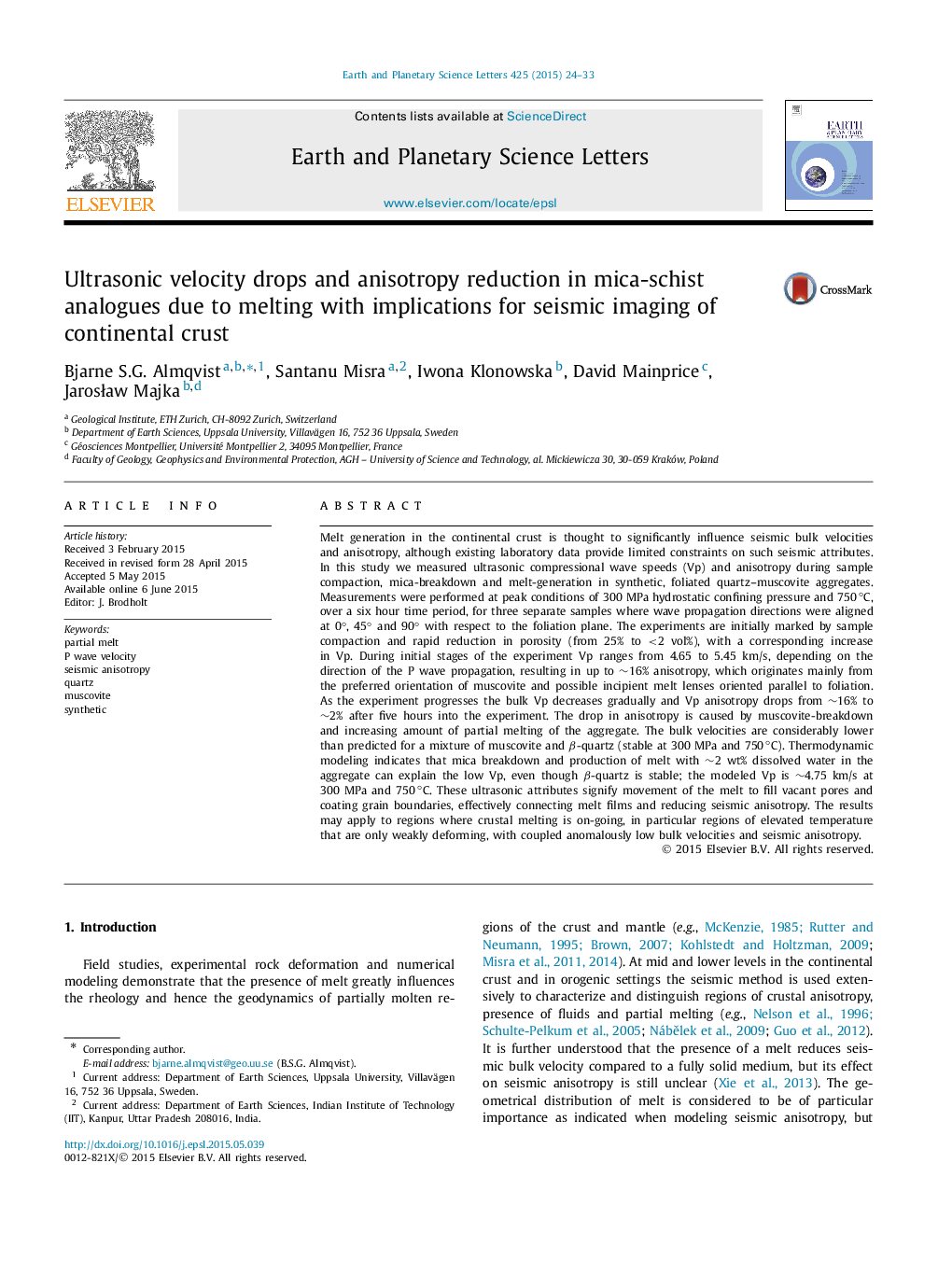| کد مقاله | کد نشریه | سال انتشار | مقاله انگلیسی | نسخه تمام متن |
|---|---|---|---|---|
| 6428259 | 1634731 | 2015 | 10 صفحه PDF | دانلود رایگان |
- We measure seismic properties in synthetic mica-schists undergoing melting.
- We derive seismic properties using thermodynamic modeling, for comparison with measurements.
- Partial melting in mica- and amphibole-bearing rock potentially have distinct seismic attributes in weakly deforming rocks.
Melt generation in the continental crust is thought to significantly influence seismic bulk velocities and anisotropy, although existing laboratory data provide limited constraints on such seismic attributes. In this study we measured ultrasonic compressional wave speeds (Vp) and anisotropy during sample compaction, mica-breakdown and melt-generation in synthetic, foliated quartz-muscovite aggregates. Measurements were performed at peak conditions of 300 MPa hydrostatic confining pressure and 750â°C, over a six hour time period, for three separate samples where wave propagation directions were aligned at 0°, 45° and 90° with respect to the foliation plane. The experiments are initially marked by sample compaction and rapid reduction in porosity (from 25% to <2 vol%), with a corresponding increase in Vp. During initial stages of the experiment Vp ranges from 4.65 to 5.45 km/s, depending on the direction of the P wave propagation, resulting in up to â¼16% anisotropy, which originates mainly from the preferred orientation of muscovite and possible incipient melt lenses oriented parallel to foliation. As the experiment progresses the bulk Vp decreases gradually and Vp anisotropy drops from â¼16% to â¼2% after five hours into the experiment. The drop in anisotropy is caused by muscovite-breakdown and increasing amount of partial melting of the aggregate. The bulk velocities are considerably lower than predicted for a mixture of muscovite and β-quartz (stable at 300 MPa and 750â°C). Thermodynamic modeling indicates that mica breakdown and production of melt with â¼2 wt% dissolved water in the aggregate can explain the low Vp, even though β-quartz is stable; the modeled Vp is â¼4.75 km/s at 300 MPa and 750â°C. These ultrasonic attributes signify movement of the melt to fill vacant pores and coating grain boundaries, effectively connecting melt films and reducing seismic anisotropy. The results may apply to regions where crustal melting is on-going, in particular regions of elevated temperature that are only weakly deforming, with coupled anomalously low bulk velocities and seismic anisotropy.
Journal: Earth and Planetary Science Letters - Volume 425, 1 September 2015, Pages 24-33
